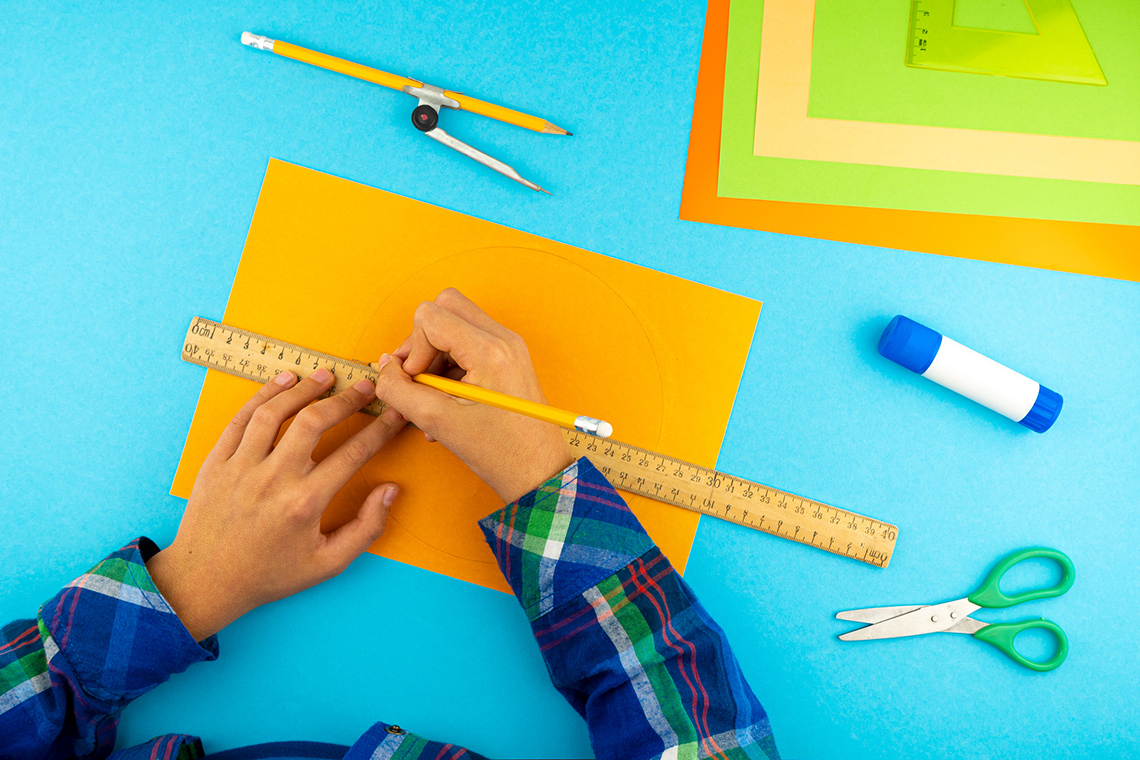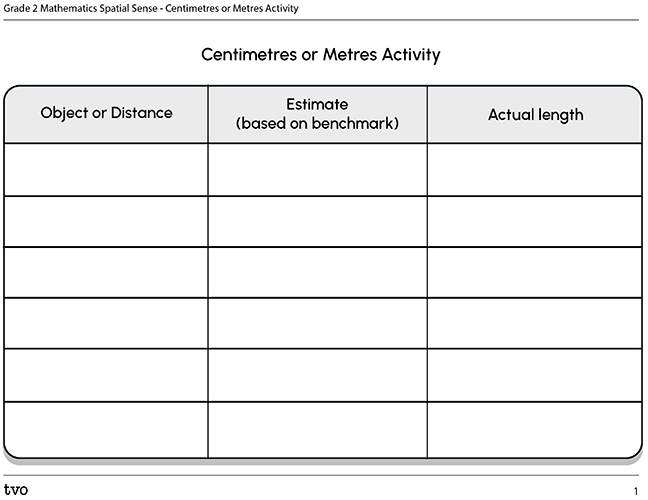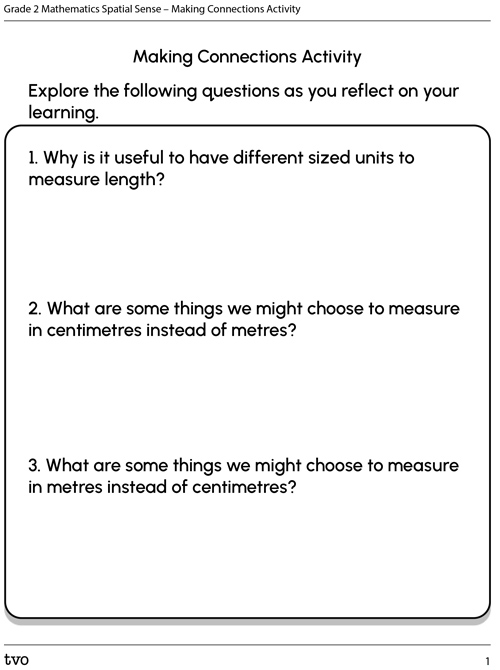Minds On
The ant and the desk
Let’s explore the following image:

Brainstorm
Let’s think!
- How long do you think the ant is?
- How long do you think the desk is?
Record your ideas in a notebook or a method of your choice.
Action
Part 1: Differences in length
To measure length, it helps to know how to compare the length of two objects.
Let’s return to our example of the ant and the desk.
Which one do you think is longer? How do you know?

We can put them side by side. Can you tell which is longer now?

Select the correct answer, then press “Check Answer” to see how you did.
Press ‘Let's check!’ to access the correct answers.
The desk is longer than the ant.
The ant is shorter than the desk.
Centimetres and metres
But how much longer is the desk than the ant?
It can be hard to tell exactly how much longer the desk is unless we measure the two.
We can measure objects using rulers, which use centimetres and metres.
Press the following tabs to access the measuring descriptions.
When measuring objects, it is best to use a unit that is smaller than the length of the object.
In this case, we would use centimetres to measure the length of the ant because it is short.
We would use metres to measure the length of the desk because it is long.
Task: Let’s sort!
Choose the best unit of measure for each object.
Select the correct answer, then press ‘Check Answer’ to check how you did.
Press ‘Let’s check!’ to see or examine the best unit of measure for each object.

Part 2: Benchmarks
What if you do not have a ruler or a metre stick?
You can estimate in centimetres and metres using a measurement benchmark.
Student Tips
Did you know?
An estimate is a guess.
A measurement benchmark is an object that we know the length of and can use to estimate the length of another object.
For example, the width of a paper clip is a common benchmark for one centimetre.

A baseball bat is a common benchmark for one metre.
The width of a door is also about one metre wide.


Student Tips
How many?
There are 100 centimetres in 1 metre.
Measuring with benchmarks
When we measure objects using benchmarks, sometimes the measurement does not come out exactly.
Let’s explore the following example:

Is the pencil closer to four or five paperclips long?
Press ‘Let’s check!’ for the pencil’s length.
The pencil is closer to four paperclips long, but it is not exactly four paperclips long.
The pencil is about the length of four paperclips.Using benchmarks to estimate
Let’s practice using benchmarks to estimate in the following learning activity:
- First, decide if you would use a paperclip width or a baseball bat to measure each object.
- Then, estimate the length of each object using the benchmark as a unit of measurement.
- Lastly, record your thinking.
Complete Measuring with Benchmarks Activity in your notebook or using the following fillable and printable document. You can also use a method of your choice.
| Object | Unit of measurement | My estimate |
|---|---|---|

|
||

|
||

|
||

|
||

|
||

|
Press the ‘Activity’ button to access the Measuring with Benchmarks Activity.
Consolidation
Centimetres or metres?

- Select 5 objects or distances in your learning space that you could measure using
centimetres and metres.
- For example, you can measure the length of a desk, or the distance from a TV to a sofa.
- Estimate the lengths or distances using a benchmark for a centimetre and a metre.
- Record your estimates.
- Measure using your benchmark tool.
- Record your measurements.
Student Tips
Other materials
You can use a length of string that is 1 metre to measure your objects and/or distances from one point to the next.
Complete Centimetres or Metres Activity in your notebook or using the following fillable and printable document. You can also use a method of your choice.

Press the Activity button to access the Centimetres or Metres Activity.
Activity (Open PDF in a new tab)Your measurements
Compare each length and/or distance, and reflect on the following questions:
- Which is the longest? Which is the next longest? Which is the shortest?
- Were there any lengths or distances that you could have used a different benchmark to measure?
Record your ideas in a notebook or a method of your choice.
Making connections
Explore the following questions as you reflect on your learning:
- Why is it useful to have different sized units to measure length?
- What are some things we might choose to measure in centimetres instead of metres?
- What are some things we might choose to measure in metres instead of centimetres?
Complete Making Connections Activity in your notebook or using the following fillable and printable document. You can also use a method of your choice.

Press the Activity button to access the Making Connections Activity.
Activity (Open PDF in a new tab)Reflection
How do you feel about what you have learned in this activity? Which of the next four sentences best matches how you are feeling about your learning? Press the button that is beside this sentence.
I feel…
Now, record your ideas about your feelings using a voice recorder, speech-to-text, or writing tool.